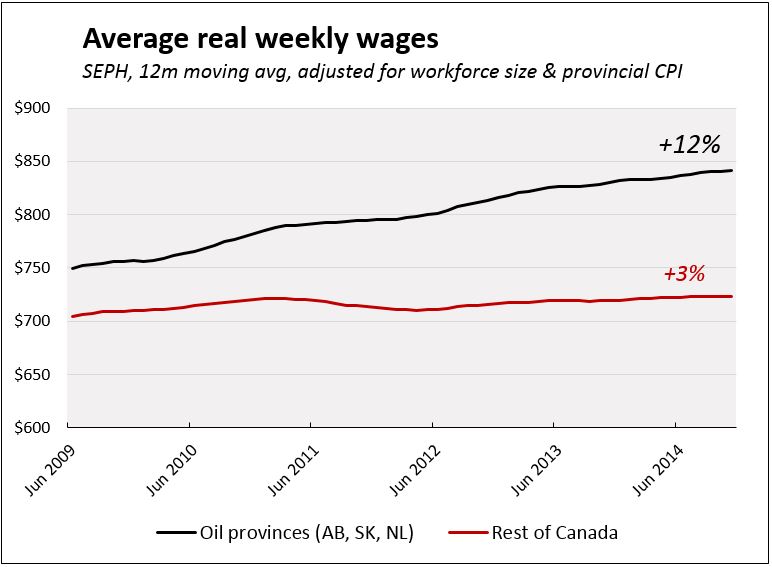The votes had barely been counted in Alberta when stories purporting to herald capital flight, particularly from the oil sands, were already appearing in venues like the Financial Post. As if on cue, the TSX fell 2%,the day after the Alberta election. What are we to make of this? Is Notley’s Alberta in the position of Rae’s Ontario 25 years ago, already being undermined?
An assessment of the NDP’s victory in Alberta grounded in reality has to account for the fact that the place of the oil industry in the province is, for the moment, being left largely unchallenged. This is no value judgment: support for the industry is the default position of most Albertans, not just elites. Given the economic importance of the oil industry and relative lack of economic diversification combined with the absence of a mass movement pushing against oil extraction and dependency, this should not be surprising.
The Alberta NDP’s program seeks to redistribute the gains from a resource economy largely left untouched. This general tendency is moderated by commitments to greater consultation with First Nations and an end to active lobbying for the Keystone XL and Northern Gateway pipelines. The latter, however, is a practical decision based on the small likelihood of these being built. All the while, for example, oil by rail continues to gather pace. The flip side of greater spending on social welfare are policies to recapture more of the proceeds of the oil boom while leaving its fundamentals intact: moderate tax increases and a planned royalty review.
For now, it seems the warnings of capital flight are thus a first salvo with a blank round. The dire words from parts of the business press and business elites are mostly bluster. Many business figures are actually taking a conciliatory tone; even the infamous “five CEOs” have taken it back. Fear-mongering is mixed with courting favour.
